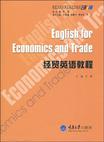经贸英语教程
2009-8
重庆大学出版社
于秋 编
246
304000
《经贸英语教程》是当前培养复合型人才的重要教材之一。我们针对复合型人才的特点和培养目标,系统地介绍、讲解经济原理和国际贸易核心理论,将语言技能水平的提高融入到专业知识的学习、运用当中来。 教材的编写原则是专业知识和语言训练并重。即理论知识要系统、专业;语言表达要精练、易懂。我们挑选了既是国际经济贸易领域的基础而又核心的概念理论,又是同学们日常生活确实有所接触的话题,充分考虑了学生的认知能力,激发学生学习的兴趣和热情,循序渐进,从而保证学习的效果。 全书共11章,每一章都由四个部分组成,第一、二部分是两篇课文,分别介绍基础理论。第一篇引入话题,语言相对浅显干练,篇幅较短,其目的在于培养兴趣、引入话题,并配有理解性问答题;第二篇文章专业性相对较强、理论概念较多、篇幅相对较长,针对精读、学以致用的目的,同时也安排了多种形式的练习题,并侧重语言技能的训练;第三部分补充阅读,介绍更多更专业的相关内容,给学习者提供更为宽泛的知识和同一问题不同的视角,为检验理解程度配了虽少但有深度的问题;最后的案例分析部分是为锻炼学生实践能力而设计的。本书所选择的内容都是与单元主题密切相关、篇幅较短、可操作性强的热门话题。所有章节的文章都给出了生词的英文解释和术语注释(汉语详解并提供了大量的专业背景信息)。 本教材内容丰富,知识体系清晰、系统、完整,包括宏、微观经济学原理和国际贸易理论和实践。话题涉及到经济增长、政府职能、货币、银行与投资、贸易理论、贸易环境与壁垒、国际收支、外汇、会计学等经济生活的方方面面。 在编写过程中作者参阅了英汉语的国内外相关教材,并结合自身的多年教学经验,博取众长,努力化专深为通俗,尽量为学生们打造一本融系统的经贸专业知识学习和语言技能训练于一体的复合型教材。但由于作者能力水平有限,不足和缺点在所难免,愿同行、专家不吝赐教。 本书的出版得到了丛书编审的宝贵建议和重庆大学出版社编辑们的热心支持,在此特致以谢意。
《经贸英语教程》是当前培养复合型人才的重要教材之一,内容丰富,知识体系清晰、系统、完整,包括宏、微观经济学原理和国际贸易理论和实践。全书共分为11章,第一章都由四个部分组成,第一、二部分是两篇课文,分别介绍基础理论;第三部分为补充阅读,介绍更多更专业的相关内容;最后的案例分析部分是为锻炼学生实践能力而设计的。话题涉及经济增长、政府职能、货币、贸易理论、贸易环境与壁垒、国际收支、外汇、会计学、营销学等经济生活的方方面面。
Chapter 1 What Is Economics Passage 1 What Is Economics Passage 2 Macroeconomics Supplementary Reading Economic Concepts in Daily Life Case Study A World without Jobs?Chapter 2 Economic Growth Passage 1 Economic Growth Passage 2 The Measurements of Economic Growth Supplementary Reading Economic Forces Case Study Japan’s Economic Performance between 1960—1996Chapter 3 The Economic Roles of Government Passage 1 The Economic Roles of Government Passage 2 Government Policies Supplementary Reading A Brief History of Economic Thought Case Study China’s Macroeconomic Policy in Recent YearsChapter 4 Money Passage 1 What Is Money? Passage 2 Money and Its System Supplementary Reading Finance: A Company’s Lifeblood Case Study E-cach and EqualityChapter 5 Investment Passage 1 What Determines Investment Passage 2 Debts or Securities Supplementary Reading Stock Exchange in America Case Study Company Profile and Investment HighlightsChapter 6 Accounting Passage 1 Introduction to Accounting Passage 2 The Balance Sheet Supplementary Reading Generally Accepted Accouting Principles and Organizations Concerned with GAAP Case Study Effects of Business Transactions upon the Balance SheetChapter 7 International Trade Passage 1 International Trade Passage 2 Basic Theories of International Trade Supplementary Reading Ways of Doing Business Internationally Case Study The Foreign Trade of the UKChapter 8 World Trade Organizations Passage 1 Basics of GATT Passage 2 The Basics of the World Trade Organization Supplementary Reading The Uruguay Round Case Study China’s Bid to Join the World Trade OrganizationChapter 9 Trade Barriers Passage 1 International Trade System Passage 2 Barriers to World Trade Supplementary Reading Multinational Corporations Case Study The Theory Behind the AntidumpingChapter 10 Foreign Exchange Passage 1 Foreign Exchange Trading Passage 2 Foreign-rate Systems Supplementary Reading The Foreign Exchange Market Case Study The Gold Standard and the Great DepressionChapter 11 International Payment Passage 1 The Balance of Payments Passage 2 The System of Bretton Woods Supplementary Reading Balance of Payments Adjustments Case Study Mexico’s 1994 Balance of Payments Crisis
Most simply put, economics is the study of how a society people) chooses to usescarce resources to produce goods and services and to distribute them to people forconsumption. Any economy s resources consist of three broad areas: natural, capital,and labor. Natural resources, such as crude oil, natural gas, minerals, timber, andwater, are provided by nature in limited amounts; they must be processed to become aproduct or to be used to produce other goods or services. For example, trees must beprocessed into lumber before they can be used to build homes. Meanwhile, capitalresources refer to the goods produced for the purpose of making other types of goods andservices. Some capital resources, called current assets, have a short life and aregenerally used up in the production process. These resources include fuel, raw materials,paper, and money. Opposite to current assets, long-lived capital resources, which can beused repeatedly in the production process, are called fixed capital. Examples includefactory buildings, compact-disk machines, personal computers, and railroad cars. In addition to natural resources and capital resources, labor resources represent thehuman talent of a nation. To have value in the labor force, individuals must be trained toperform either skilled or semiskilled work. For example, the job of a physicist requiresextensive training, whereas only minimal training is needed to operate a service station sgas pumps. This collection of human talent is the most valuable national resource.Without human resources, productive use of either natural or capital resources isimpossible. Resources are used to produce goods and services which will meet people s needs and wants. Needs are goods and services that people must have or possess simply for survival or exist ence. For example, food, clothing, shelter, and medical care are needs; Wants, on the other hand, are things they would like or are willing to have but do not absolutely need for survival. Video recorders, cassettes, fashionable clothes, and luxury vacations are generally viewed as wants. Wants mostly are unlimited: According to psychological theories, people have different levels of needs and wants.
知名专家领衔,编写队伍精英荟萃。 具有系统性,注重教材之间的支撑和衔接。 具有完整性,覆盖大纲规定的所有课程类型。 具有新颖性,理念、素材和体例均大大突破传统教材。 典有开放性,可根据不同情况灵活选择。 突出对学生基本技能和实际应用能力的培养。 培养学生人文素质和跨文化意识,强调全面发展。 注重与《普通高中英语课程标准》的衔接。 适应大学英语教学基本要求,大学英语学生可选修。

这书好不容易淘到的,还行
主编就是我们上课的老师,感觉书中的文章还不错,只是有点过时了!